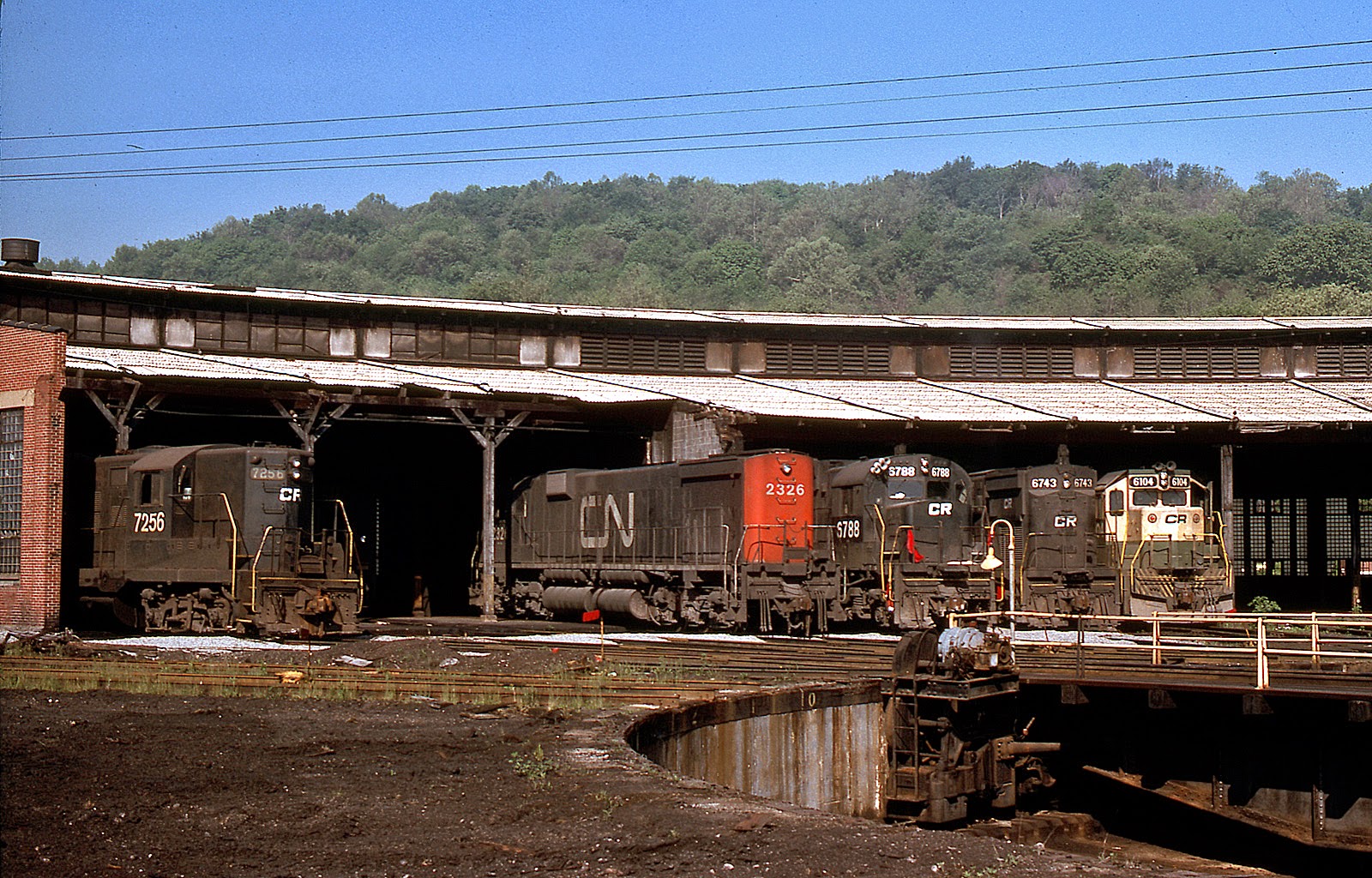A busy day for me yesterday didn’t leave any time for
a Throwback Thursday, but to make up for it, here instead is FPA-4 Friday - a
look back to the summer of 1986. It’s August 4th of that year and we
are at Bathurst street in Toronto, Ontario, on a bright and sunny morning.
Through the viewfinder we observe this rather odd, “everything but the kitchen
sink” consist that includes VIA FPA-4 #6793, three RDC’s, and FP9 and even an
Ontario Northland coach. The oddball collection of equipment is in fact an
equipment move from Toronto Union Station to VIA’s Mimico servicing facility,
located a few miles down CN’s Oakville subdivision, west of Toronto. It appears
that three separate trains have been combined to ferry the consists to Mimico
for servicing before heading out on other trains later in the day. We can guess
that the FP9 and three cars on the west end of the move are from a westbound
train, perhaps from up north judging by the ONT coach in the consist (perhaps
VIA equipment had been used on that day’s Northlander?). The RDC’s are likely
off of an eastbound train in from Niagara Falls, as they were common on VIA
trains in the area until LRC/HEP-II cars took over and the RDC’s were retired.
And the 6793 and two east-end cars are also likely off of an eastbound, perhaps
the morning Sarnia train (#84) that came down the Guelph sub by way of
Stratford, Kitchener, and Guelph. Any way you slice and dice it, there’s a lot
to look at in this photo!
What has happened in the intervening 29 years? A
lot, as it turns out. The most obvious change in the photo is the equipment –
the “Blueline” coaches, the FPA-4, the FP9, and almost certainly the RDC’s were
phased out and replaced by VIA’s current roster of GE P42DC’s, GMD F40PH-2’s,
LRC coaches, and Budd-built HEP-II cars. A handful of RDC’s are retained for
the Sudbury-White River operation, in a modified paint scheme with silver ends
instead of yellow. Another major change is that the tracks in the background
diverging to the right, the CN Weston subdivision has been greatly modified to
incorporate a major grade-separation project, and the tracks have been lowered
significantly in this area. The area in general now is considered the Union
Station Rail Corridor, and operated by provincial transit authority Metrolinx
(operator of GO Transit as well). In fact, Metrolinx now owns the Oakville subdivision
all the way from Union Station to Burlington West, about 32 miles (though CN
still serves local customers on the line, primarily at night). Some tracks at
left have been removed (as has the freight yard in the distance at right), and
the building in the centre has been demolished; high-priced glass-exterior
condos now dominate the area. One thing that hasn’t changed? – the signal
bridges. All three signal bridges that the train is passing under still stand,
though plans to replace them with the modern aluminum structure, LED-lit “Darth
Vader” signal bridges probably aren’t far off.
What about VIA 6793? – well, the engine not only
dodged the scrapper’s torch, but evidently earned a vacation, now enjoying the
Arizona sunshine as Grand Canyon Railway 6793. Painted in a bright silver and
gold paint scheme, the engine now hauls trainloads of tourists in and around
Williams, AZ. I bet it doesn’t miss the cold Canadian winters! A number of
ex-VIA FPA-4’s survive in the US, on shortlines/tourist operations such as
Grand Canyon Railway, Napa Valley Wine Train, New York & Lake Erie and Cuyahoga
Valley to name a few.
‘Til next time,
Cheers,
Peter.







